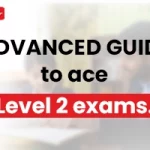
As a student, managing stress is vital for academic success and overall well-being. With the demands of coursework, exams, extracurricular activities, and personal responsibilities, it’s easy to become overwhelmed and stressed out. However, it’s important to take time to relax and recharge in order to perform at your best and maintain a healthy balance in your life.
Check out – How to recognize and address signs of burnout in students?
5 Simple Stress Management Techniques
There are various relaxation techniques that students can easily do at home or between classes or studies to help manage stress. These techniques can help to calm the mind, reduce anxiety, and promote a sense of peace and well-being. Here are some simple yet effective relaxation techniques that you can incorporate into your daily routine:
| Deep Breathing |
|
Deep breathing is a powerful relaxation technique that can help to calm the mind and body. By focusing on your breath and taking slow, deep breaths, you can activate the body’s relaxation response and reduce feelings of stress and anxiety. To practice deep breathing, find a quiet place to sit or lie down, close your eyes, and take slow, deep breaths in through your nose and out through your mouth. Focus on the sensation of the breath moving in and out of your body, and allow yourself to relax and let go of any tension or worry.
|
| Progressive Muscle Relaxation |
| Progressive muscle relaxation is a technique that involves tensing and then relaxing different muscle groups in the body. By systematically tensing and releasing muscle groups, you can release physical tension and promote relaxation. To practice progressive muscle relaxation, begin by tensing the muscles in your feet and then slowly work your way up through the rest of your body, tensing and releasing each muscle group as you go. Focus on the sensation of relaxation as you release the tension in each muscle group, and allow yourself to feel calm and at ease.
|
| Guided Imagery |
|
Guided imagery is a relaxation technique that involves visualizing peaceful and calming scenes in your mind. By imagining yourself in a peaceful setting, such as a beach or a forest, you can create a sense of relaxation and escape from the stresses of daily life. To practice guided imagery, find a comfortable place to sit or lie down, close your eyes, and imagine yourself in a peaceful and serene place. Focus on the sights, sounds, and sensations of this imaginary place, and allow yourself to feel calm and at peace.
|
Also Check out – The Importance of 8 Hours of Sleep: A Game-changer for Students’ Stress Management
| Meditation |
|
Meditation is a mindfulness practice that involves focusing the mind and cultivating a sense of presence and awareness. By practicing meditation regularly, you can reduce stress, improve concentration, and promote emotional well-being. To meditate, find a quiet place to sit or lie down, close your eyes, and focus on your breath or a mantra. Allow yourself to let go of distractions and thoughts, and simply be present in the moment. With regular practice, meditation can help to calm the mind and cultivate a sense of inner peace.
|
| Yoga |
|
Yoga is a mind-body practice that combines physical postures, breathwork, and meditation to promote relaxation and well-being. By practicing yoga, you can release physical tension, improve flexibility and strength, and relieve stress and anxiety. There are many different styles of yoga to choose from, so you can find a practice that suits your needs and preferences. Whether you prefer a gentle, restorative practice or a more vigorous flow, practicing yoga regularly can help you to relax and recharge both mentally and physically.
|
Stay Happy & Healthy!
Check in Details – 7 Stress Management Tips for Students for Healthy Mind!



































